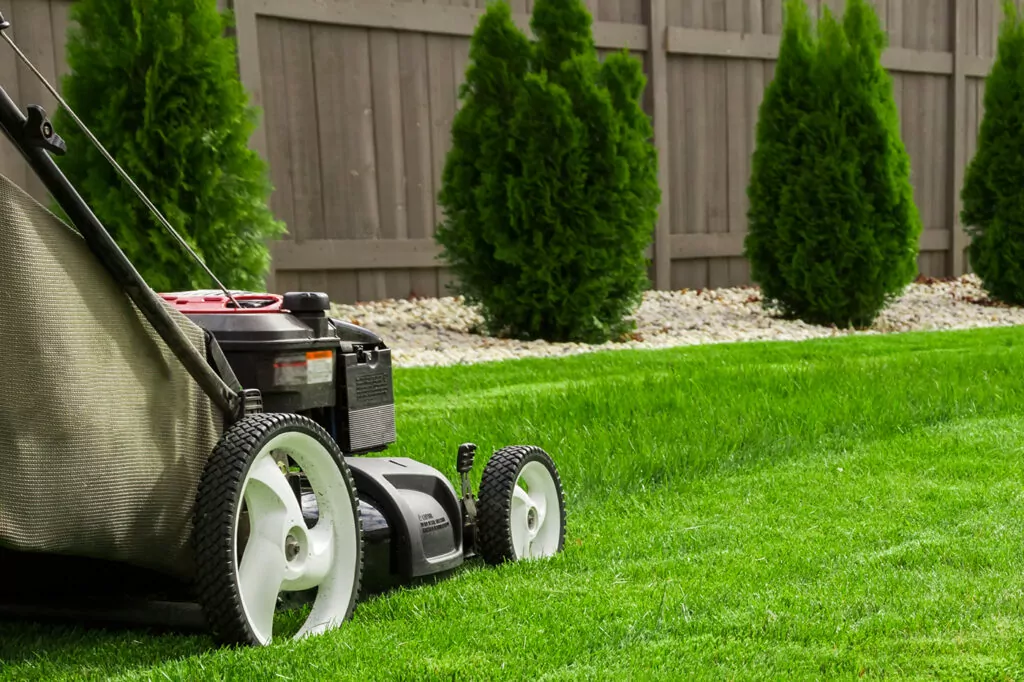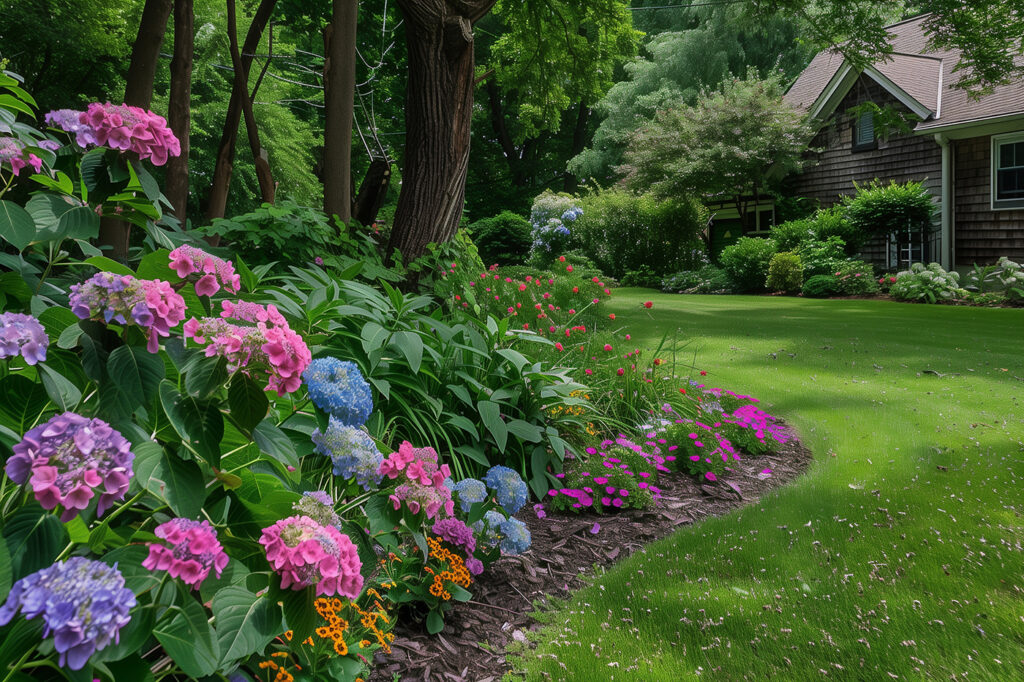Have you ever passed by someone’s lawn and wondered how they got it looking so crisp? (You couldn’t help but admire those straight lines—what kind of sorcery is this!?) Well, they were probably homeowners who engaged in good lawn care. More specifically, they were lawn edging. What’s lawn edging, you ask? Great question! Lawn edging is the process of trimming grass around borders like flower beds, driveways, and sidewalks and it instantly elevates your curb appeal. In this article, we’ll explain how to pull this off properly, even if it’s your first time. Read on and let’s get to cutting.
1. Mow the Lawn

First things first: get to mowing. Think of mowing your lawn before edging as getting a haircut before styling. You need a clean base to work with, after all! So grab your lawn mower and mow to your desired height—a shorter cut (around 2 ½ inches) is generally recommended for edging because it allows you to see the line between the grass and the soil more clearly. Just be careful and make sure you don’t cut it too short!
2. Delineate Your Path

Now, it’s time to visualize your ideal lawn boundary. Using a string line, edging tool, or even a garden hose create a clear line where the lawn ends and the edging begins. This helps you get a clean, straight cut and prevents over-trimming. Planning your edging path is crucial for achieving a clean and uniform look. Don’t skip this step!
3. Gather the Lawn Edging Tools

Now that you have your edging path planned and ready to go, it’s time to gather your lawn edging tools! Here are some edging tools that you’re going to want to have handy:
- Edger: This tool typically has a long, flat blade designed for slicing through grass and soil to create a clean, defined edge.
- Manual Edger: This tool often resembles a shovel with a curved blade at the bottom. It’s great for creating a crisp, defined edge and is a favorite among manual edging enthusiasts.
- String Trimmer (Weed Whacker): This tool can be used for edging and trimming around trees or flower beds.
- Edging Shears: You’ll want shears for any touch-ups you need to make later on.
- Gloves: Safety first! Protect your hands from nicks and cuts.
- Safety Glasses: Flying debris happens, especially when using power tools. Shield your eyes with safety glasses to avoid any accidents.
4. Cut the Edge

If you’re using a manual edger, be warned that it may take a while. It’s really important to get a good technique going so you can do it as efficiently as possible and get those straight edges. You’re going to place your tool about 2 inches from the edge and then dig it into the lawn so it’s 2 inches deep. Lift and remove any excess lawn and continue your way around the lawn!
If you’re using a power tool, keep one thing in mind: you want your body to move not your arms. That means you need to hold your arms out straight and steady while you slowly walk with the tool. Just moving your body forward rather than your arms makes the cut much cleaner.
5. Edge the Garden Beds

Now that your lawn edges are looking sharp, bring those clean lines to your flower beds. When you create a clear separation between the lawn and the beds, it prevents grass from creeping in and making it look unpolished.
6. Look for Any Jagged Areas

Once you’ve completed the edging, take a step back and admire your handiwork! Walk along the edged path and check for any uneven sections or jagged areas. Also, make sure to check the bushes and shrubs for any overgrown branches or other imperfections. Use your shears for touch-ups and you’re good to go!
7. Clean up any mess

No project is complete without a good cleanup! To ensure your newly edged landscape stays pristine, rake up any grass clippings, debris, or mulch that’s left over.
Lawn Edging FAQs

There’s so much information about lawn edging, that it can feel overwhelming! That’s why we rounded up some commonly asked questions on edging lawns and provided expert advice and answers.
Is it possible to edge the lawn manually?
It is absolutely possible to edge the lawn manually. While it does take a little bit longer to edge your lawn manually, it can also make it more precise. The bottom line? If you have the time and the patience—go forth and edge.
What is the best lawn edging tool?
There are tons of tools you can use, whether that’s power edgers or manual ones. The best tool ultimately comes down to your needs. Ask yourself the following:
- What’s my budget?
- Do I have time constraints?
- What kind of edges am I looking to create?
Once you answer those questions, you’ll have a better idea of which tool will best suit your needs.
What is the easiest way to edge a lawn?
If it’s your first time, you might want to use a power tool to make the job easier. Plus, as always, you can hire a Tasker to take care of it—that’s the easiest way to get your lawn edged.
What do professionals use to edge lawns?
Lots of professionals use a manual edger (also known as a half-moon edger or step edger). This is a favorite among the pros because it enables them to cut crisp lines in the turf.
Should you edge before or after mowing?
Always edge your lawn after mowing! This way, you can ensure that you’re starting off with a clean base. That way, you’ll be able to get super precise and have your lawn looking fantastic in no time.
What is the best way to edge lawns?
By following the simple steps above, of course! Also, you should make sure you choose the edging tool that you’re most comfortable with. Whether it’s manual or a power tool, always remember to walk on a hard surface (like a sidewalk or your driveway!) while you edge.
Hire a Tasker to Do the Job
Sure, you could edge your lawn on your own with a DIY job—picking out the right tools, making sure everything is tight, and cleaning up the mess. But there’s really no need for all of that. Why? Because Taskrabbit’s lawn maintenance services exist! Local Taskers will provide you with way better prices than fancy landscapers and will do it quickly and efficiently. Get ready for your plants (especially your beloved fern) to look their absolute best.














